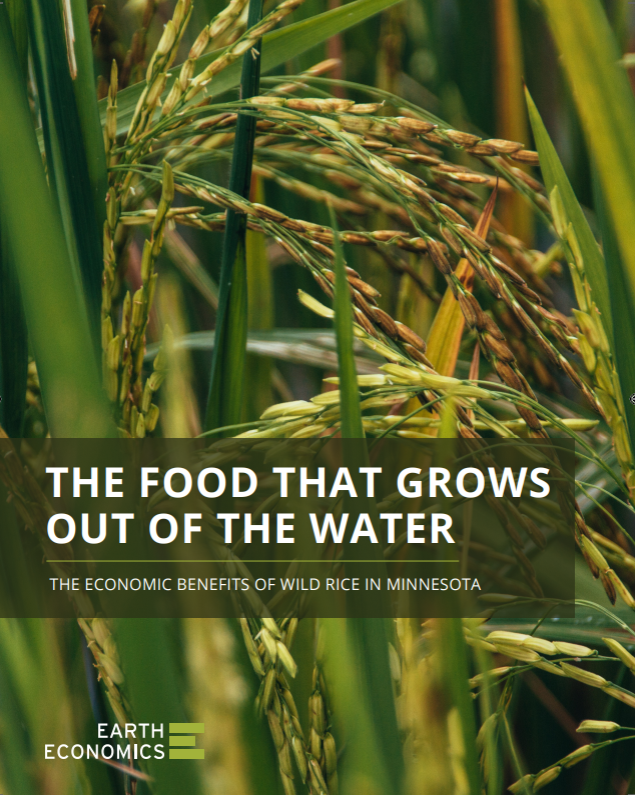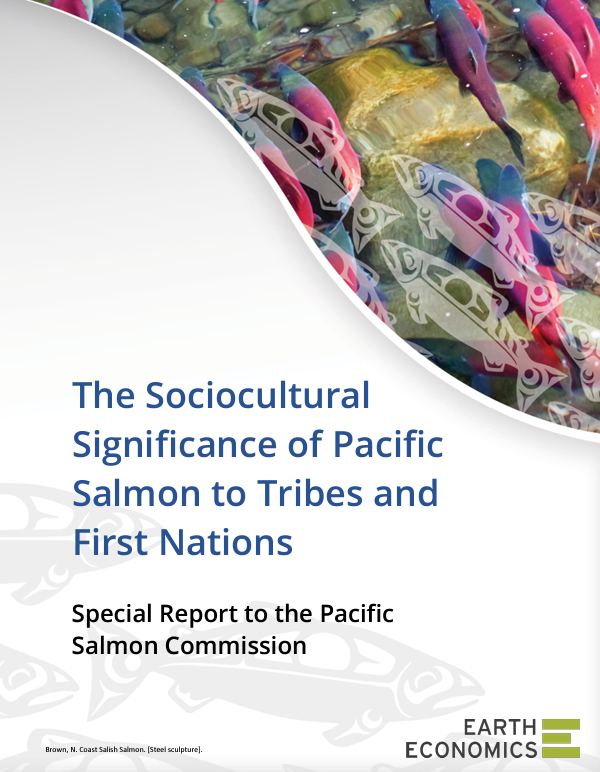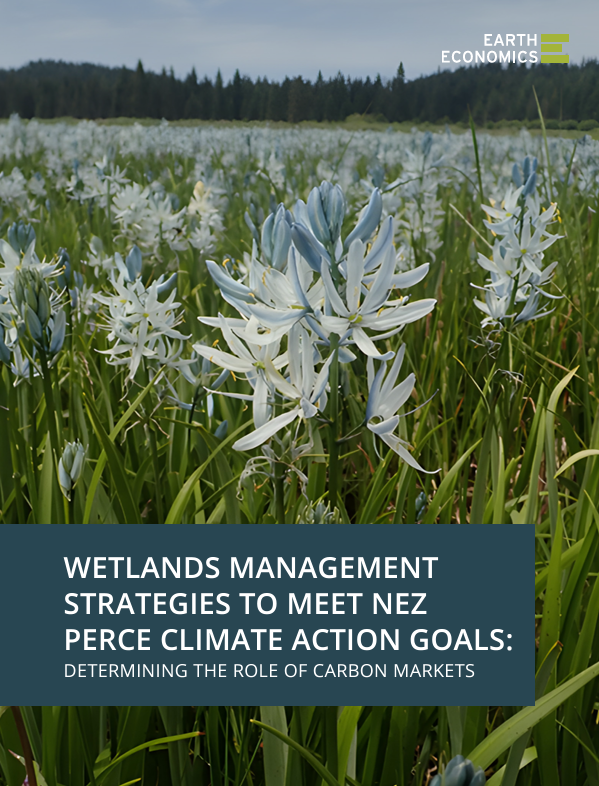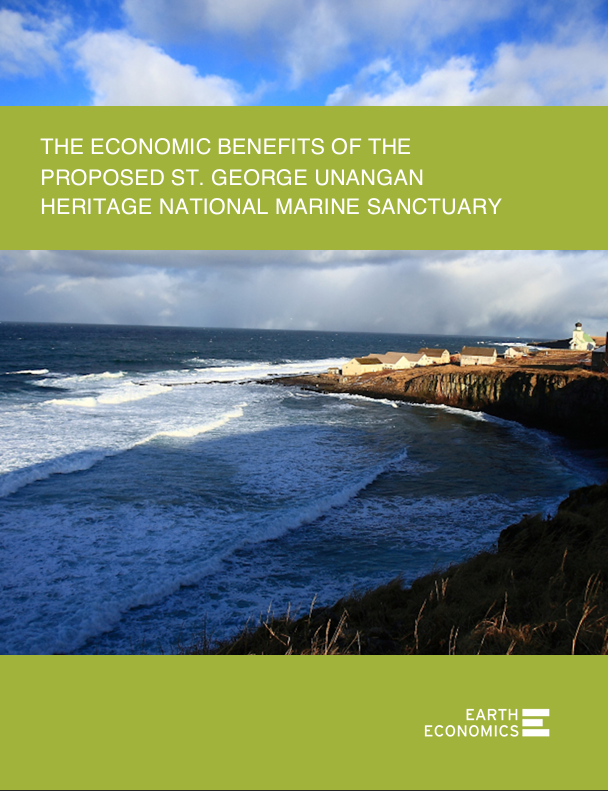Since 2009, Earth Economics has supported Indigenous-led stewardship through partnerships with Tribes, First Nations, and Inter-Tribal Organizations. Directed by Indigenous leadership and frameworks, Earth Economics has conducted holistic economic analyses to inform policies, Treaties, restoration projects, economic opportunities, and conservation planning. We have also produced several additional studies that underscore Indigenous values regarding natural resource and land stewardship.
Earth Economics acknowledges that we operate on the lands of the Coast Salish peoples, specifically the ancestral homelands of the Puyallup Tribe of Indians, and the 1854 Medicine Creek Treaty.
HIGHLIGHTS
The Food that Grows out of the Water: the Economic Benefits of Wild Rice in Minnesota
Working with the Fond du Lac Band of the Lake Superior Chippewa, the Great Lakes Indian Fish and Wildlife Commission, the 1854 Treaty Authority, the Minnesota Department of Health, and the US Environmental Protection Agency, Earth Economics studied the importance of wild rice (manoomin) to Ojibwe cultural identity, spiritual traditions, and food security. This 2018 study focused on the overall economic contribution of wild rice to the Minnesota economy, and what losses of wild rice habitat has meant throughout the region.
The Sociocultural Significance of Pacific Salmon for Tribes and First Nations
Earth Economics produced a report on the significance of Pacific salmon to the wellbeing of Indigenous communities throughout the Pacific Northwest for the Pacific Salmon Commission (PSC) with the Tribal and First Nations Caucus to the Commission. Insights from 31 Indigenous representatives highlighted the importance of salmon in terms of social cohesion, personal health, livelihoods, Indigenous management, and cultural knowledge. The Special Report emphasized that conserving Pacific salmon is crucial to the integrity of both ecosystems and Indigenous cultures throughout the region.
“Thank you for such a thoughtful and extensive study that is the best analysis of the unique and complex examination of our cultural values for salmon and what it means to our Indigenous peoples. Nice work!! It has been a pleasure working with you and your team.”
Wetlands Management Strategies to meet Nez Perce Climate Action Goals: Determining the Role of Carbon Markets
In 2023, Earth Economics partnered with the Nez Perce Tribe to assess the potential for generating wetland-based credits for carbon markets to restore soil health, enhance habitat, and sequester greenhouse gases as part of their Climate Change and Mitigation Adaptation Plan. The study found that without carbon markets for prairie wetland credits, the Tribe would need to either craft a new pathway, or partner with others who share their interests. Earth Economics identified knowledge gaps and key decisions for evaluating the costs and benefits of carbon markets, as well as alternatives such as temporary conservation easements, water quality trading, and wetland mitigation banking.
“We are so grateful for your excellent work and proud to have you as a partner.”
The Business Case for Salmon Parks
Earth Economics is currently conducting a benefit-cost analysis of Indigenous-led old growth conservation plans for the Salmon Park Stewardship Society. These include the economic, social, and cultural benefits which the Salmon Park Plan is expected to bring to local and provincial economies, ecosystems, and communities over the next seven generations. This analysis contrasts a scenario in which forests are managed to restore the health of forest ecosystems and salmon habitat, against the long-term impacts of business-as-usual.
“Building a holistic, large-scale, and Indigenous-led conservation program like Salmon Parks is complex and takes a diverse set of expertise. Translating the value of our program into terms that decision-makers and multiple stakeholders can understand is key to building and maintaining strategic support for Salmon Parks, so we rely on Earth Economics to account for and communicate the values generated by Indigenous-led conservation that are so often externalized and overlooked.”
The Economic Benefits of the Proposed St. George Unangan Heritage National Marine Sanctuary
In 2016, Earth Economics conducted an economic valuation of the proposed St. George Unangan Heritage National Marine Sanctuary in Alaska's Bering Sea for the Aleut International Association. The study found that establishing a marine sanctuary would protect declining resources and employment, support sustainable fisheries, and boost the local economy through growth in tourism. The Sanctuary itself could provide ecosystem service benefits of $2.8–$3.3B each year, enhancing subsistence harvests and scientific research, and contributing to the preservation of vital marine ecosystems.
“Earth Economics … found that the cost of replacing our subsistence food with store-bought food would be approximately $20,000–$42,000 per year. This calculation illustrates the potentially devastating financial risks we face if our resources are not sustainably managed.”





